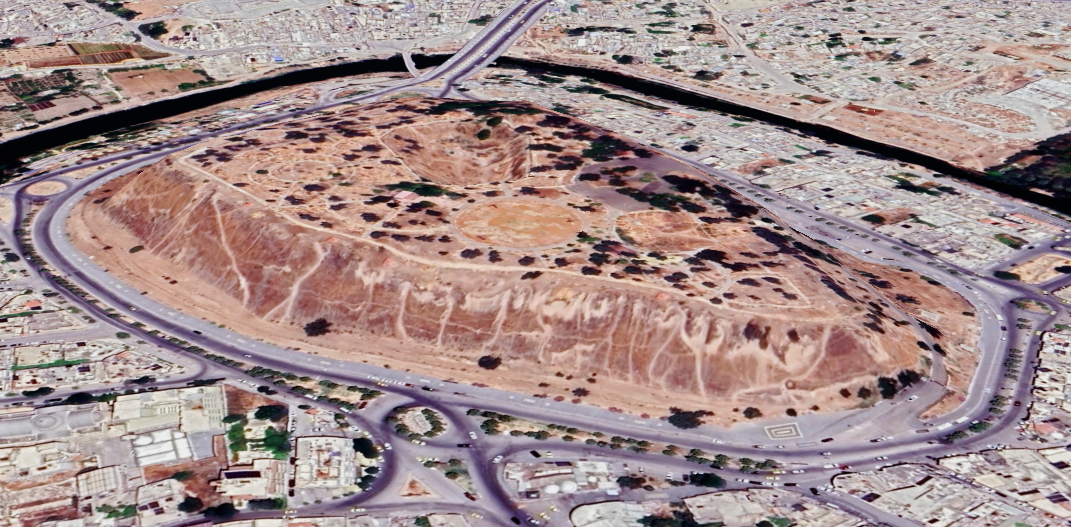Hama
| Transliterated Name | Source | Name |
|---|---|---|
| Hama | Arabic | حَمَاة |
| Hmt | Syriac | ܚܡܬ |
| Emathoùs | Byzantine Era Greek | Εμαθούς |
| Emath | Byzantine Era | |
| Epiphaneia | Ancient Greek | Ἐπιφάνεια |
| Epiphaneia Syriae | Ancient Greek | |
| Epiphaneia ad Orontem | Ancient Greek | |
| Hamat | Biblical Hebrew | חֲמָת |
| Hamath the Great | Amos 6:2 in the Hebrew Bible | |
| Amat | Assyrian | |
| Hamata | Assyrian |
Situated along the Orontes at a natural crossing,
Hama developed as
a regional hub linking interior Syria with the Mediterranean coast
and the northern plains. The city is often identified with ancient
Hamath, noted in first-millennium BCE sources, and it continued to
flourish through Hellenistic, Roman, Byzantine, and Islamic periods,
reflecting its strategic position and fertile riverine setting.
Hama is renowned for its historic
wooden waterwheels (norias), which
lifted Orontes water to elevated aqueducts and gardens. Together with
its citadel mound and layered urban fabric, these features illustrate
long-term continuity of settlement and water management along the
river corridor.
Hama is a city on the Orontes River, between the barren Syrian steppe to the east and the well-watered western Mediterranean highland zone to the west (35°08' N, 36°44' E). The highlands include the Jebel Ansariye, which separates the Orontes Valley from the Mediterranean littoral. Hama is located 146 km (91 mi.) south of Aleppo, about 140 km (87 mi.) to the east of Banias on the Mediterranean coast, about 47 km (29 mi.) north of Homs and 209 km (130 mi.) north of Damascus. The course of the Orontes River moves through Hama in a northwesterly direction from the desert toward the Ghab, an area of exceptionally rich, dark soil from Asharneh to Qarqur that until recently was a marshy area. Hama has a long history, documented for thousands of years by written, cultural, and archaeological remains. The extended modern city, whose emblem is the nouria, or "water wheel," traces its history back to the Early Islamic city. Islamic buildings and building remains are still visible throughout the modern urban configuration, which supports almost 200,000 people and includes the classical city (Epiphaneia Syriae or Epiphaneia ad Orontem) and still earlier ones.
Medieval and classical remains were encountered in the highest levels of the ancient tell excavated by a Danish expedition supported by the Carlsberg Foundation between 1930 and 1938. An Iron Age acropolis, in phases E and F of the site's sequence, contains monumental buildings most likely associated with the capital city of the biblical land of Hamath (2 Sm. 8:9). In the Bronze Age, the site is identified with an Ematu mentioned in the Ebla texts and possibly with the Imat or Amata mentioned in Egyptian texts. After the Islamic conquest, the name reverted from its classical name to the earlier form.
| Effect | Location | Image(s) | Description |
|---|---|---|---|
| Wall Damage ? | Mound at Hama |
|
-
Earthquake Archeological Effects chart
of Rodríguez-Pascua et al (2013: 221-224)

 Earthquake Archeological Effects (EAE)
Earthquake Archeological Effects (EAE)
Rodríguez-Pascua et al (2013: 221-224)
| Effect | Location | Image(s) | Description | Intensity |
|---|---|---|---|---|
| Wall Damage ? | Mound at Hama |
|
VII+ |
Walmsley, A. (2013). Early Islamic Syria. United Kingdom: Bloomsbury Publishing.
Zaqzouq, A. "Fouilles preliminaires a Hama" (in Arabic). Annales Archeologiques Arabes Syriennes 33.2 (1983): 141-178.
Ploug, G., 1985. Hama: fouilles et recherches, 1931-1938; 3, pt. 1. The Graeco Roman town (Copenhague: Nationalmuseet) 109-111
Papanicolaou Christensen, Aristea, and Charlotte Friis Johansen.
Hama, fouilles et recherches, 1931-1938, vol. 3.2, Les poteries hellenisliques el les terres sigillees orientales. Copenhagen, 1971.
Papanicolaou Christensen, Aristea, et al. Hama, fouilles el recherches,
1931-1938, vol. 3, The Graeco-Roman Objects of Clay, the Coins, and
the Necropolis, Copenhagen, 1986.
Ploug, Gunhild, et al. Hama, fouilles el recherches, 1931-1938, vol. 4.3,
Les perils objels medievaux sauf les veneries el poteries. Copenhagen,
1969.
Riis, P. J. Hama, fouilles et recherches, 1931-1938, vol. 2.3, Ixs cimelieres
a cremation. Copenhagen, 1948.
Riis, P. J., et al. Hama, fouilles el recherches, 1931-1938, vol. 4.2, IJCS
verreries et poteries medievales. Copenhagen, 1957.
Buhl, Marie-Louise. "Hamath." In The Anchor Bible Dictionary, vol. 3,
PP- 33-3S- New York, 1992. Excellent summary.
Fugmann, Ejnar. Hama, fouilles et recherches, 1931-1938, vol. 2.1,
L'architecture des periodes pre-hellenistiques. Copenhagen, 1958. Standard reference work for the pre-Hellenistic remains.
Modderman, P. J. R. "On a Survey of Palaeolithic Sites near Hama."
Annales Archeologiques de Syrie 14 (1964): 51-66.
Papanicolaou Christensen, Aristea, and Charlotte Friis Johansen.
Hama, fouilles et recherches, 1931-1938, vol. 3.2, Les poteries hellenisliques el les terres sigillees orientales. Copenhagen, 1971.
Papanicolaou Christensen, Aristea, et al. Hama, fouilles el recherches,
1931-1938, vol. 3, The Graeco-Roman Objects of Clay, the Coins, and
the Necropolis, Copenhagen, 1986.
Ploug, Gunhild, et al. Hama, fouilles el recherches, 1931-1938, vol. 4.3,
Les perils objels medievaux sauf les veneries el poteries. Copenhagen,
1969.
Ploug, Gunhild. Hama, fouilles et recherches, 1931-1938, vol. 3.1, The
Graeco-Roman Town. Copenhagen, 1985.
Riis, P. J. Hama, fouilles et recherches, 1931-1938, vol. 2.3, Ixs cimelieres
a cremation. Copenhagen, 1948.
Riis, P. J., et al. Hama, fouilles el recherches, 1931-1938, vol. 4.2, IJCS
verreries et poteries medievales. Copenhagen, 1957.
Riis, P. J., and Marie-Louise Buhl. Hama, fouilles et recherches, 1931 -
1938, vol, 2.2, Les objets de la piriode dite syro-hiltite (Age du Per).
Copenhagen, 1987. The Iron Age objects from the citadel at Hama.
Thuesen, Ingolf. Hama, fouilles et recherches, 1931-1938, vol. 1, The Pre and Protohistoric Periods. Copenhagen, 1988. Detailed presentation
of the earliest remains from the tell at Hama.
Zaqzouq, A. "Fouilles preliminaires a Hama" (in Arabic). Annales Archeologiques Arabes Syriennes 33.2 (1983): 141-178. The most recent
excavations on the tell at Hama.
